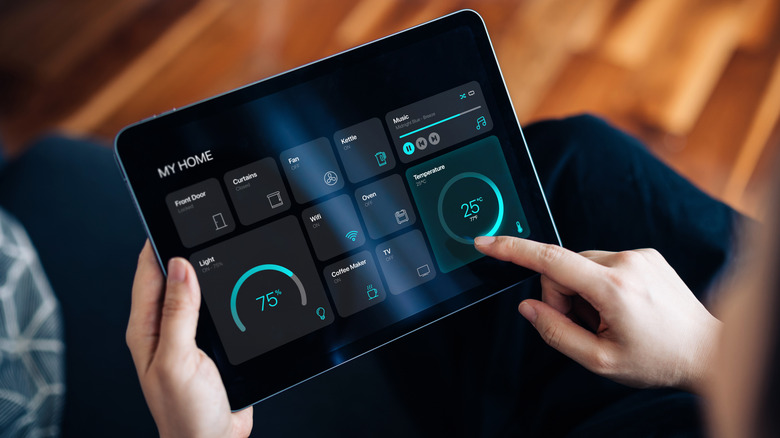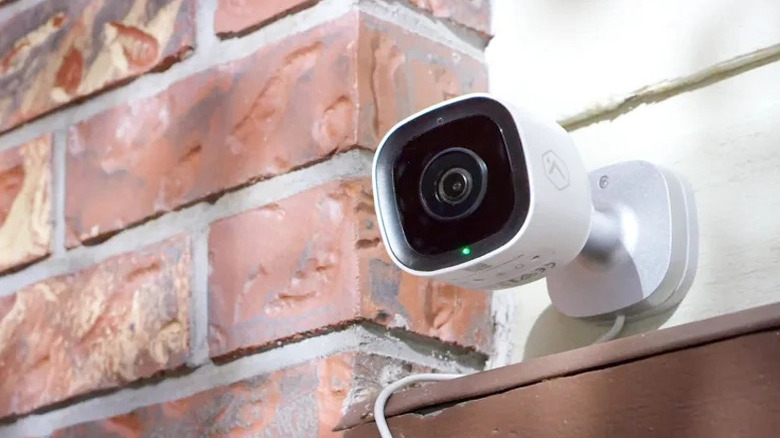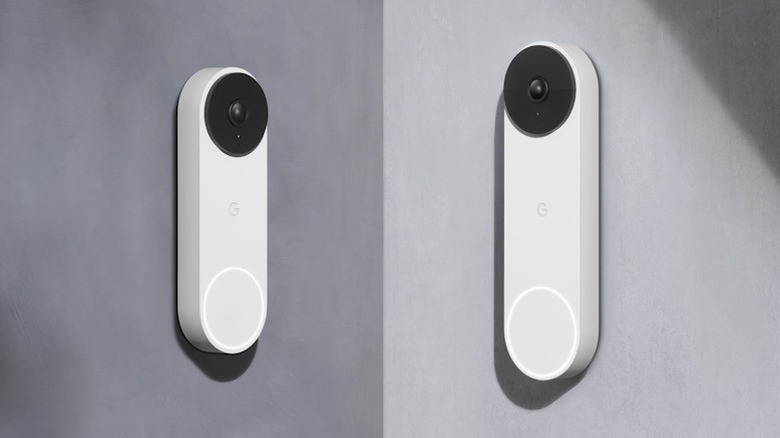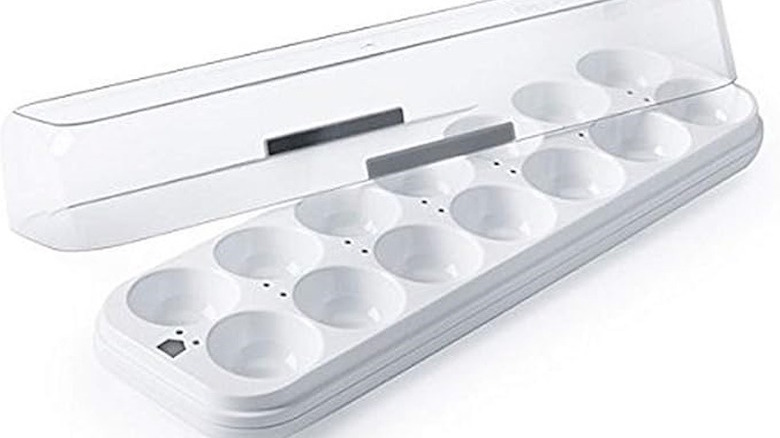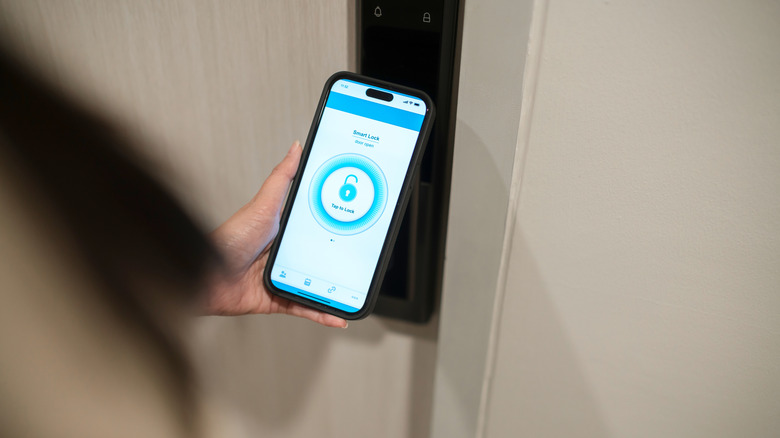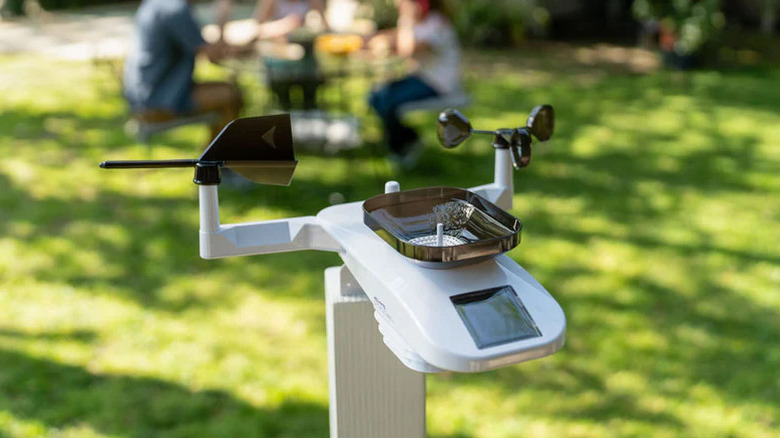5 Smart Devices You Should Avoid Having In Your Home
We may receive a commission on purchases made from links.
Adding a smart device to your home or business is a great way to enhance your everyday space. These advanced electronics are designed to make your life easier by saving you time, improving security, or making everyday tasks more convenient. You can even add smart devices to your outdoor spaces if you enjoy spending time in your backyard. You may also consider integrating a smart home hub to determine if you need one based on how many of these devices you have throughout your property.
Whenever you purchase a new smart device, you might discover that it comes with a feature that becomes a drawback to using it, turning it into a headache rather than making your life more efficient. There are a few smart devices you should avoid adding to your home, and there are specific features you also want to avoid having in any smart device you purchase. Whenever you're looking to buy a new smart device for your home, review whether anything you want to buy has these features that could hamper your experience.
Smart devices with subscription services
Purchasing a smart device and being able to use it immediately out of the box with limited assembly is a huge win. If you're worried about setting up these devices in your home, we've tracked down several smart home gadgets that are very easy to set up. Any additional steps you're required to take after installing them make the process more cumbersome. When you discover a subscription requirement for these devices, that's a huge red flag that you're better off finding something else. When a smart device requires a subscription, the company typically hides several main functions behind this paywall. They could even cease functioning altogether, leaving you with an obsolete item that serves no further purpose in your home.
For example, Telus has several SmartHome bundles that feature connected lights, thermostats, security cameras, and more, which you could grab through a bundle with a monthly subscription. Although you initially save money with these bundles, eventually, the subscription costs can quickly catch up, costing more than the individual items would have cost had you purchased them separately. You're better off researching other companies and brands that sell smart devices that work by themselves, outside of a subscription. Many smart devices from different companies do not have a subscription program, preventing those costs from sneaking up on you in the long run.
Smart devices requiring internet connectivity
When your smart devices require an internet connection to work at all, that's another feature you're better off avoiding. There are times when your at-home internet connection might not function properly, be it problems with your provider, a local outage, or even a minor hiccup that temporarily causes your devices to lose and then regain connection to your Wi-Fi signal. A smart device that won't function without a consistent internet connection can be a huge problem.
This is especially true when the smart device you're using is a video camera, doorbell alarm, or other security device that needs an internet connection to function, potentially putting your home or business at risk. Consumers have reported that video cameras by Wyze have this problem. Another example is the Google Nest camera, which doesn't stop working if your internet goes down but loses advanced features such as remote smartphone access. Issues like this can easily stack up when you place your video camera in a strategic spot to protect your home, but you'll have to consider if the placement works with your Wi-Fi signal. You're better off finding security devices and ways to protect your home that don't require a constant connection to your Wi-Fi, if you can help it. There are multiple smart home devices that still work with no internet connection worth considering.
Egg Minder egg tracker
The intention behind adding a smart device is to take a simple worry or task from your daily routine and offload it onto an electronic so you don't have to focus on it as much. You want your life to become more efficient with the implementation of this device, casually using it, and viewing it as an improvement now that you have it. For many, the addition of the Egg Minder egg tracker is not it. It's a smart device that causes more issues than it helps, especially as it's assigned to perform a mundane task of letting you know your eggs are old.
In reality, the device required a lot of middle management for the user. When purchasing this product, you'd connect the Egg Minder to an application on your phone, record when you bought the eggs, and leave the Egg Minder to sync with the application and coordinate when each egg on the tray would get old. Unfortunately, reviewers and customers who purchased the Egg Minder ran into more problems with the application not properly linking up with the tray, not displaying the correct expiration dates for the eggs, and a list of other visual and application-based issues. It's a smart device meant to help with the simple issue of reducing food waste, but it falls short. There are other smart kitchen applications that you should consider adding to your counter if you're looking for different ideas.
Security devices without two-factor authentication
A smart device can bring added protection to your home or business, but how good is your security on these devices? You don't want to leave a door open for someone else to gain access to these connected devices. Given that they could link to a cloud server or have access to the internet, there's a possibility of this happening. A good way to add a layer of protection to your smart device is with two-factor authentication, where you confirm access to a device through your phone or e-mail address.
Not every smart device you add to your network will have a two-factor authentication security measure. For smart devices like security cameras, locks, or doorbells that use video, it should be seen as an essential feature to add even more protection to these crucial items. You want to stay away from a smart security device that doesn't have this option. Amazon Echo Cameras have this feature, but it's not mandatory as it's tied to your Amazon account, unlike security cameras from Ring or Google. You can use your cameras and set them up without having this security feature. There's no harm in adding it to your system, as two-factor authentication goes a long way in preventing someone from slipping into your profile and system. It's one of several easy ways to make your smart home more secure.
AcuRite Weather Station
Learning about your local weather is a good way to finalize any plans you might have for the weekend or figure out if it's a good time to exercise, garden, or take care of other outdoor activities that you might not have time for during the work week. Rather than relying on a weather network or a website, adding a smart weather station could provide you with accurate, local information. Unfortunately, the AcuRite Weather Station might not be the solution, as you could manage weather predictions better on your own than it does in telling you whether to expect an impending rainstorm.
It's a weather station that has caveats, such as a display that runs on batteries despite having a solar panel. The solar panel only powers the internal fan for its sensor, which feels like an oversight. It also needs to be plugged into a computer using a USB cable if you want to read details away from the display. You won't be able to read any of this information from your smartphone without this connection. There are weather station devices you could purchase that connect directly with your smartphone and might prove more convenient. The AcuRite Weather Station might be better to avoid.
